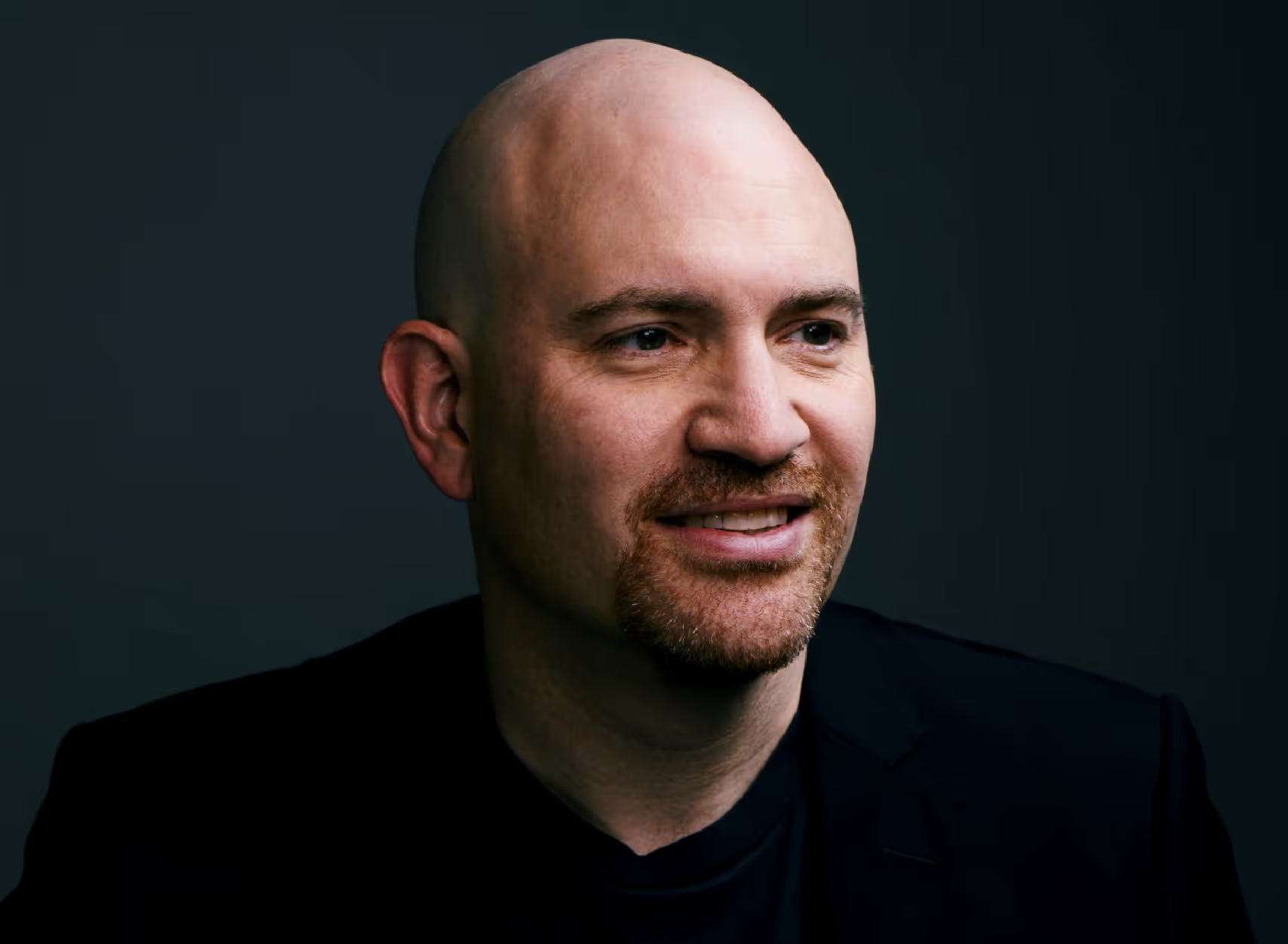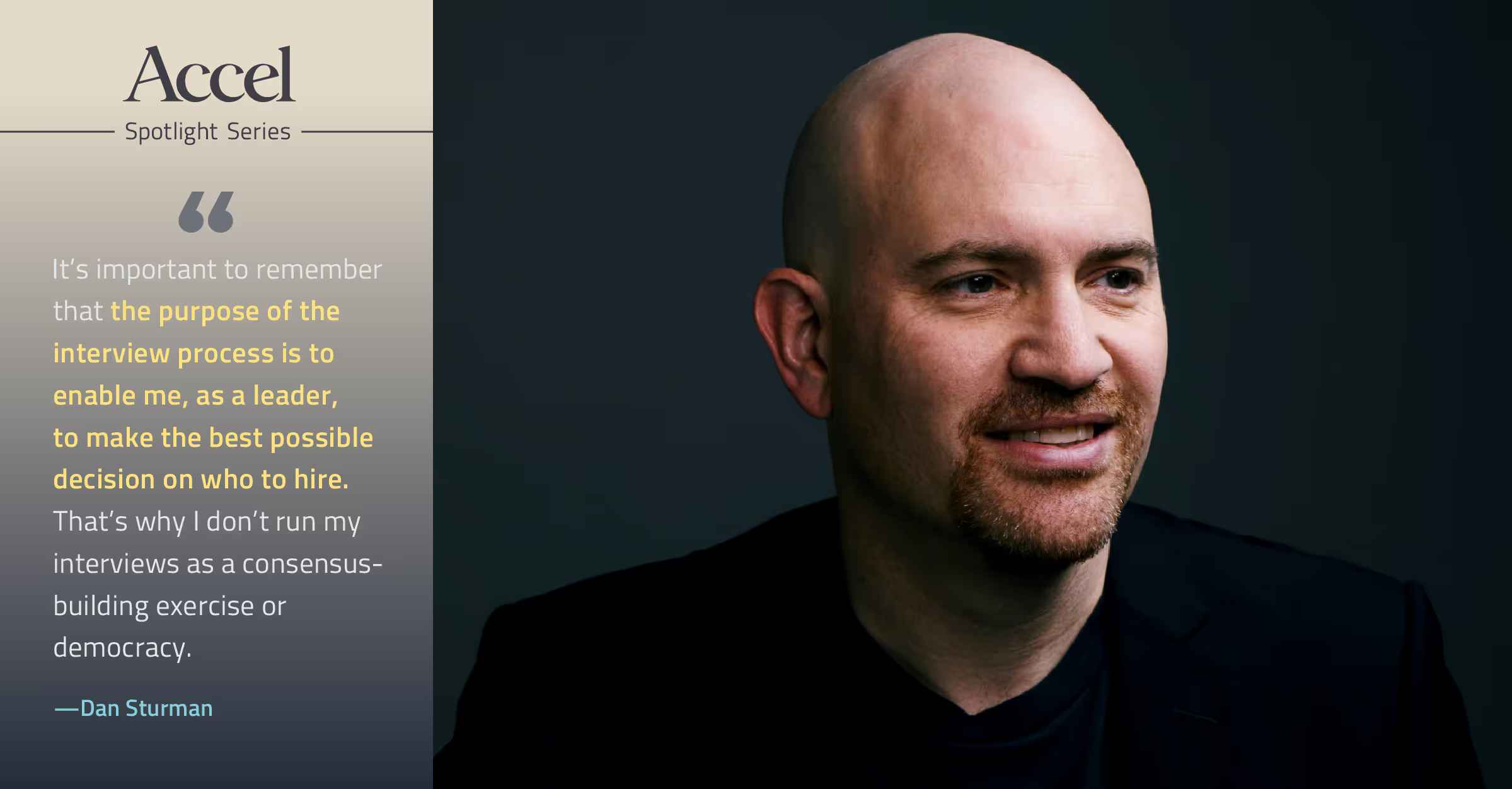Spotlight On: Executing an Effective Candidate Search

This is Part II in our 3-part interview series with Dan Sturman, former SVP of Engineering at Cloudera and VP of Engineering at Google, on how to build great teams.
In Part 1, Dan shared his best practices for how to approach filling talent gaps on your team, especially when you’re hiring for a new role; the importance of developing “primary” and “secondary” candidate traits and how to avoid common and limiting scenarios like the “Brand Trap.”

In this interview, Dan walks us through how to best structure the initial interview process, including why he believes casting a wide net at the beginning of your search can actually be one of your most effective tools in the long run—even if it means more time spent on conversations and phone screens early on—and why a successful candidate search can never be democratic.
Peter: Once you know what you are and are not looking for in a leader, what tips do you have on making a more effective search?
Dan: When I engage in a search, I spend a lot of time on phone screens or intro interviews, being very careful to avoid screening someone out based just on their resume [See: Brand Traps in our first post]. This is also a particularly important strategy when developing a more diverse team. Of course it does cost more in terms of time as I’m having initial conversations with more candidates. But as I discussed in my first post, my focus on identifying primary vs. secondary traits allows me to effectively structure that initial conversation and make it relatively efficient. Even better, if you clearly articulate the primary vs. secondary traits, your recruiter will be grateful—a good recruiter can use this information as they talk to candidates and give you an initial read, helping to streamline the process even more.
I’ve also found having more conversations early on has an additional side benefit: it helps me better hone in on what I’m looking for in a candidate and continually refine my job description. I find the broader set of conversations is particularly helpful when I’m hiring for a role that is new to my team, e.g. a quality lead or SRE lead when before you had leaders focused on development roles. More often than not I learn something new in every interview and those learnings better inform my search going forward.
How to Develop the Most Effective Interview Questions
Given I tend to cast a wide net, I use the identified primary traits for the role along with the candidate’s resume to develop a good set of interview questions. When I build the list of primary traits, I typically develop an initial list of interview questions to test those attributes at the same time. My read of a resume then provides a backdrop of a number of “likes” and “fears” about the candidate. I tweak my questions to both ensure the likes are well placed and backed by actual experiences, and to dig in on possible fears to see if there is truly reason for concern. For example:
- Suppose I need a leader with strong team-building abilities in the context of a rapidly growing, and slightly chaotic, company environment. [Primary Traits]
- Say I’m considering a leader who has had a large impact on her current organization, but has always had smaller teams or has had the backdrop of a larger more structured company. [Resume “likes” and “fears”]
- For that interview I’d focus first on better understanding the impact that excited me on the resume—make sure that experience is real and substantial, and demonstrates strengths in required primary traits. I’d then dig into checking my fears: that this leader may not be mature enough in thinking about team development, or too dependent on the support provided by her current company. My questions would focus on how that leader thinks about team development, where they’ve had to make their own way versus relying on existing processes, or how hands-on they’ve been with hiring and how they’ve customized the hiring process even given the larger company structure.
- If they can provide good answers to these sorts of questions, outstanding – we move forward! If not, then on to the next candidate having spent an hour.
Without this approach, however, it’s highly unlikely I’ll learn the answer to these questions from the resume alone.
A Candidate Search Shouldn’t Be a Democracy
While you will spend more time on initial interviews or phone screens, you now hopefully have a deeper pipeline which may include some candidates overlooked by others. The next challenge I tend to face is getting the right interview panel together. Some common mistakes I’ve made in the past are including every possible stakeholder in the interview process and getting to the end of the interview process while lacking the critical information I needed to make a decision. I’ve found I can avoid both these if I remember that the purpose of the interview process is to enable me, as a leader, to make the best possible decision on who to hire. I don’t run my interviews as a consensus-building exercise or democracy. Rather, I go back to my primary and secondary traits: what do I really want to know about this candidate, what isn’t important on day one, and who within the broader organization is best qualified to help me measure those traits. Once I have my interview slate, I make sure to tell each interviewer what specifically I’m looking for them to investigate. I also find it is useful to have at least two people test each area in some way. Often I give each interviewer two or three things to focus on and ensure they overlap with other interviewers.
This approach helps avoid both those issues I mentioned previously. First, I’m not picking interviewers based on stakeholder status, but instead based on what I want to measure. When I take that approach, I’ve rarely found a case where I need more than 5 interviewers. That doesn’t mean I completely exclude stakeholders. Often one of my primary traits may be as simple as “must have chemistry with…” and the best person to test that trait is the named stakeholder. But such primary traits must be limited or you’ll quickly find no candidate can fit all the criteria. (Consider if that compatibility is instead a secondary trait someone can grow into!) Second, if I focus on measuring those primary traits and then prep my interviewers to measure specific traits, it is very unlikely I don’t have the information I need by the end of the process. In contrast, when I haven't let interviewers know what I’m looking for, I’ve ended up with candidates over-measured in some ways and under-measured in others.
To sum up what works for me: know what you’re interviewing for, use that to build a focused interview process, cast a wide net, and help your interviewers give you exactly the information you’re looking for. When I’ve committed to this approach I’ve quickly found key leaders for my team, often from diverse backgrounds; and when I’ve deviated I’ve found reqs can stay open for a long time without any feeling of making progress.
Next up in this 3-part series, Dan’s final post: determining & hiring for “First Team” behavior
Great companies aren't built alone.
Subscribe for tools, learnings, and updates from the Accel community.

.avif)